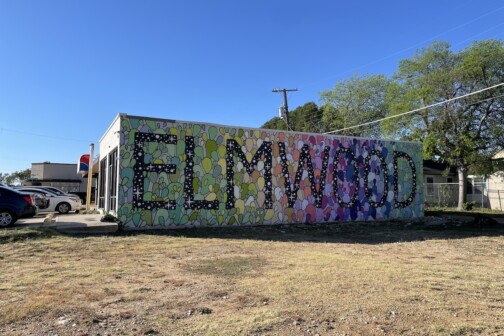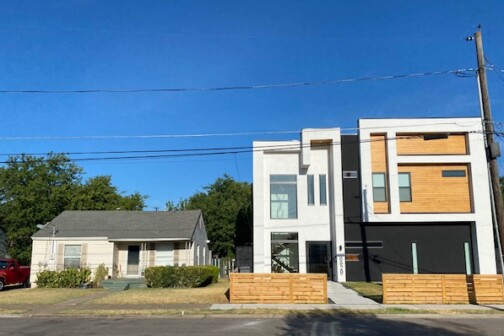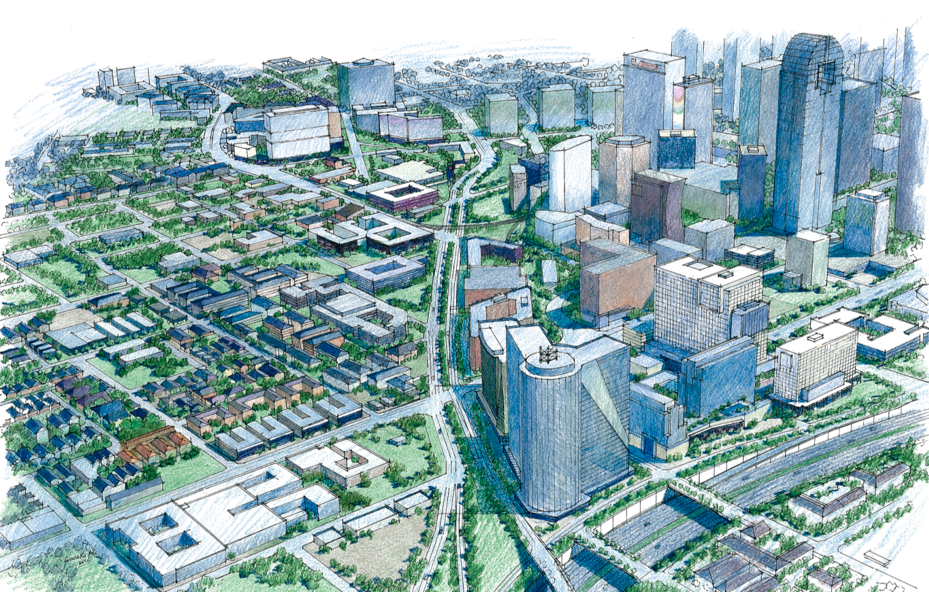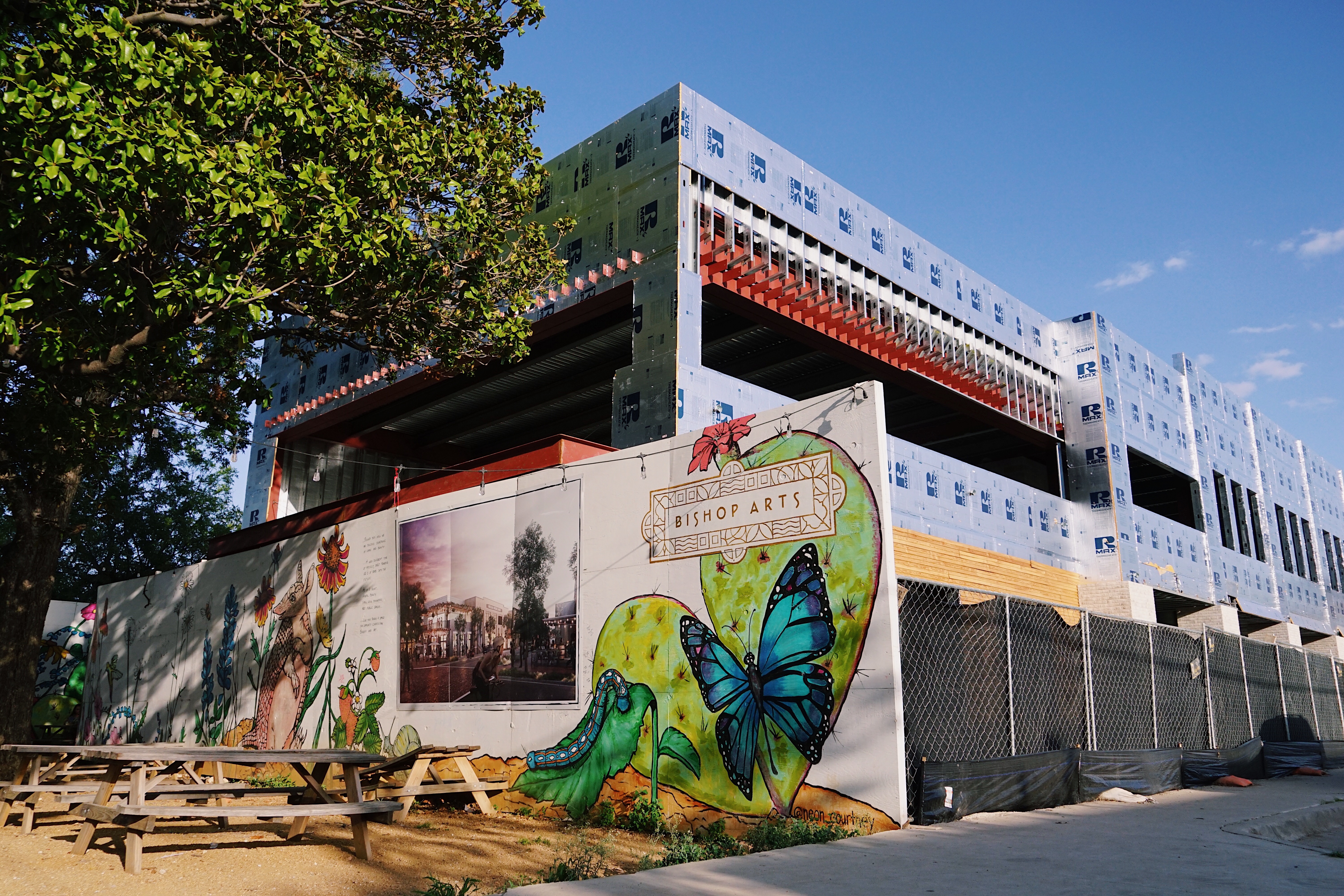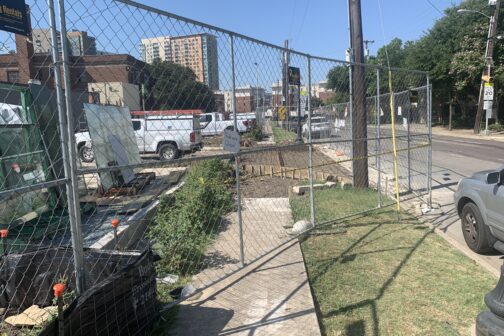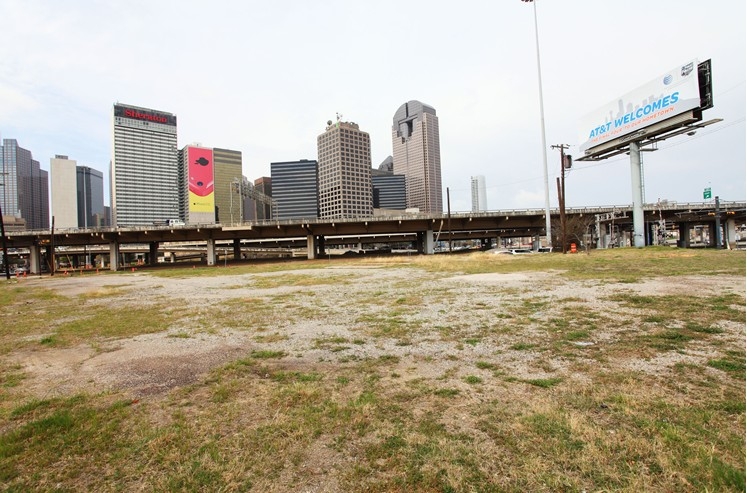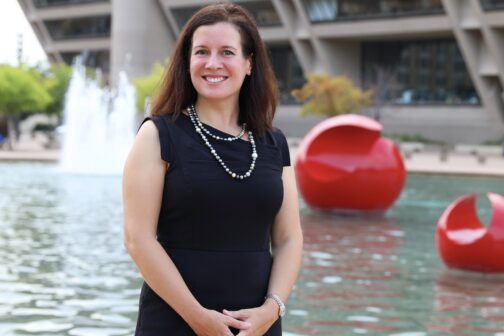Editor’s Note: The Dallas City Council unanimously approved the WOCAP plan during Wednesday’s agenda meeting.
Last March, construction workers put up a fence along both sides of 8th Street near Bishop Arts, blocking off about a dozen old two-story apartment buildings and duplexes. The developer Lennar Multifamily Group bought these properties from the McDonald family, who had owned the affordable units for decades. When they were sold, the most expensive rented for $1,200.
Lennar is doing what the city’s zoning allows it to do: demolishing those 65 units and replacing them with 252 market-rate apartments of between 500 and 1,400 square feet. The apartment buildings will be four stories tall and extend down both sides of 8th from Adams to Llewellyn, sparing only a house that Lennar didn’t scoop up. Those plans are in line with the new development that now flanks Bishop Arts.
Over the past few months, Councilman Chad West and his plan commissioner, Amanda Popken, have mentioned the changes to 8th Street as a reason why neighborhoods further south need an area plan that will help shape what can and can’t be built. In 2019, the city changed how it modifies neighborhood zoning by implementing a point system that ranks priority communities. An area plan is a good way to jump to the top of the list.
North Oak Cliff went through its own rezoning process a dozen years ago, encouraging density like what Lennar is bringing to 8th Street. The apartments up and down Zang Boulevard along the streetcar route were born from that rezoning, too.
Further south is a different matter. The West Oak Cliff Area Plan, which goes before the full City Council for a vote this afternoon nearly three years after the process began, will set the table for how five neighborhoods west of Tyler Street will eventually be rezoned. Those include downtown Elmwood; the area around the North Cliff Neighborhood Center, at Pierce and Catherine streets; Edgefield and Clarendon, near Winnetka Elementary; Hampton and Clarendon, down to Illinois; and a portion of the Jimtown neighborhood, which is packed in below Clarendon just west of Hampton.
If the plan is approved, it will help trigger what’s known as an authorized hearing. That’s the process by which the city considers rezoning a neighborhood.
Here’s the tall goal from the plan itself: “Due to the three DART light rail stations in and around the area, as well as the ongoing and continued growth in the Bishop Arts District to the northeast, this area is one where there are concerns about potential future growth pressures and subsequent fears of gentrification and displacement.”



